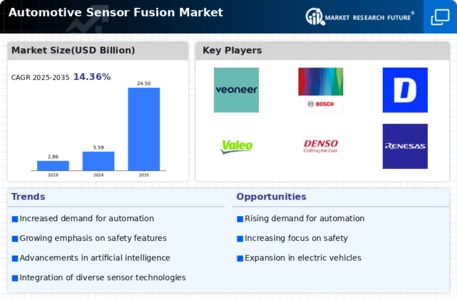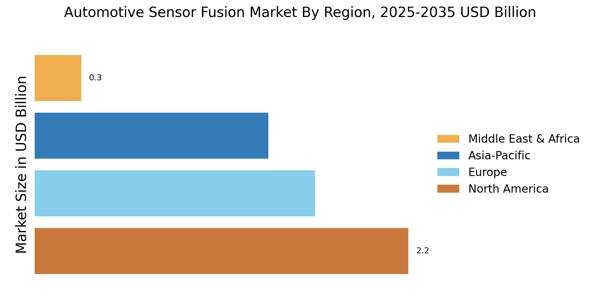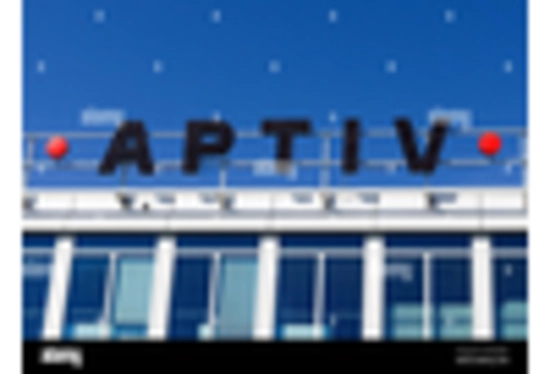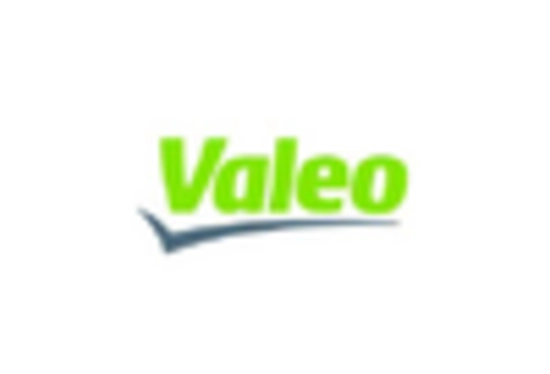Advancements in Sensor Technologies
Technological advancements in sensor technologies are significantly influencing the Automotive Sensor Fusion Market. The development of high-resolution cameras, LiDAR, and radar systems has enabled more accurate data collection and processing. These advancements facilitate the integration of multiple sensor inputs, enhancing the overall performance of vehicle systems. For instance, the fusion of data from various sensors allows for improved object detection and environmental perception, which are critical for autonomous driving applications. The market for LiDAR alone is expected to grow at a compound annual growth rate (CAGR) of over 20% through 2025, underscoring the potential for innovation in the Automotive Sensor Fusion Market. As these technologies continue to evolve, they are likely to play a pivotal role in shaping the future of automotive safety and automation.
Regulatory Support for Safety Standards
Regulatory support for safety standards is a critical driver for the Automotive Sensor Fusion Market. Governments worldwide are increasingly implementing stringent safety regulations that mandate the inclusion of advanced safety features in vehicles. This regulatory landscape encourages manufacturers to adopt sensor fusion technologies to comply with safety standards. For example, the European Union has proposed regulations that require all new vehicles to be equipped with advanced driver assistance systems by 2022. Such mandates not only enhance vehicle safety but also stimulate innovation within the Automotive Sensor Fusion Market. As regulations evolve, they are likely to create a favorable environment for the adoption of sensor fusion technologies, further propelling market growth.
Rising Demand for Enhanced Safety Features
The Automotive Sensor Fusion Market is experiencing a notable surge in demand for enhanced safety features in vehicles. As consumers become increasingly aware of the importance of safety, manufacturers are integrating advanced sensor technologies to improve vehicle safety systems. This trend is reflected in the growing adoption of driver assistance systems, which utilize sensor fusion to provide real-time data for collision avoidance and lane-keeping assistance. According to recent data, the market for advanced driver assistance systems (ADAS) is projected to reach USD 100 billion by 2026, indicating a robust growth trajectory. This heightened focus on safety is driving innovation within the Automotive Sensor Fusion Market, as companies strive to develop more sophisticated and reliable sensor fusion solutions.
Growing Interest in Autonomous Driving Solutions
The Automotive Sensor Fusion Market is witnessing a growing interest in autonomous driving solutions, driven by both consumer demand and technological advancements. As automakers invest heavily in research and development, the integration of sensor fusion technologies becomes essential for achieving higher levels of automation. The market for fully autonomous vehicles is projected to reach USD 557 billion by 2026, highlighting the potential for sensor fusion to enhance vehicle intelligence. This interest is not only limited to passenger vehicles but also extends to commercial applications, where sensor fusion can optimize logistics and fleet management. Consequently, the Automotive Sensor Fusion Market is poised for substantial growth as it aligns with the broader trend towards automation in transportation.
Increased Investment in Research and Development
Increased investment in research and development (R&D) is a significant driver of the Automotive Sensor Fusion Market. As competition intensifies among automotive manufacturers, there is a growing emphasis on developing innovative sensor fusion solutions that enhance vehicle performance and safety. Companies are allocating substantial resources to R&D initiatives aimed at improving sensor accuracy, data processing capabilities, and system integration. This trend is evident in the automotive sector, where R&D spending is projected to exceed USD 100 billion annually by 2025. Such investments not only foster technological advancements but also contribute to the overall growth of the Automotive Sensor Fusion Market. As manufacturers strive to differentiate their products, the focus on R&D is likely to yield new and improved sensor fusion technologies.


















Leave a Comment